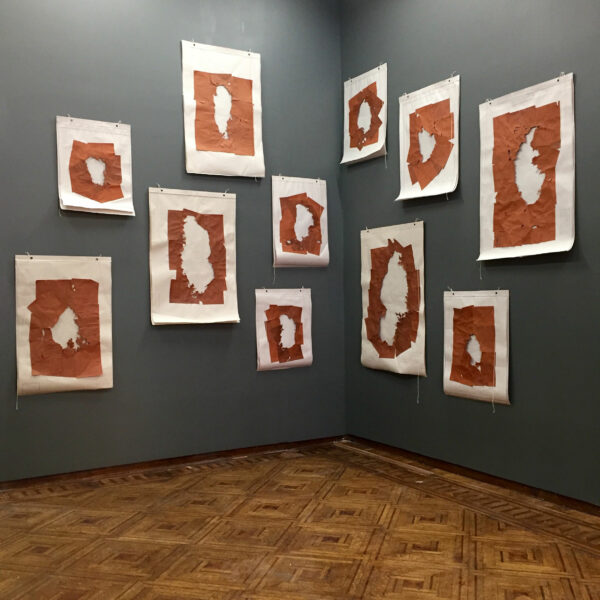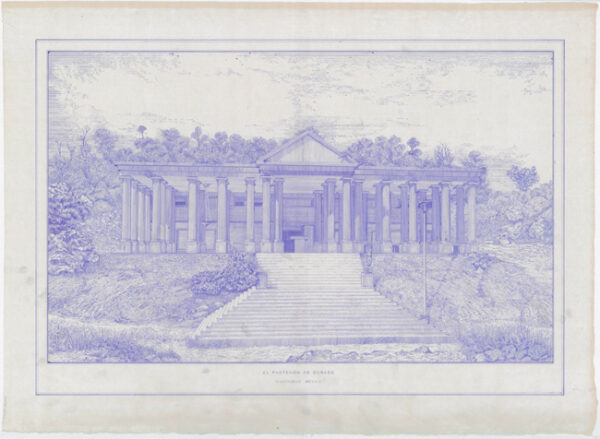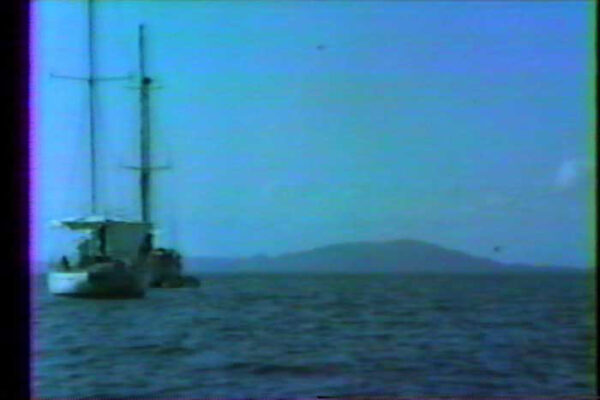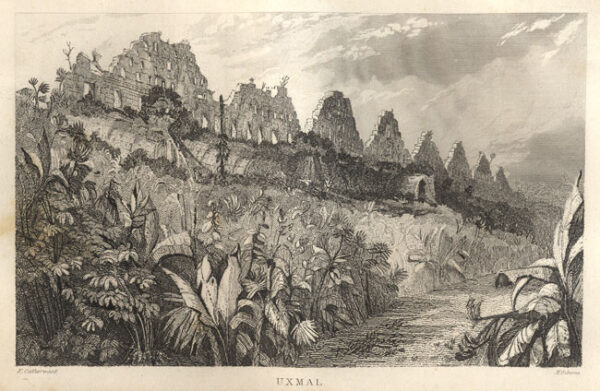I first met Virginia Colwell in Mexico City sometime in 2016 through her work on the Durazo Project, which was about a corrupt chief of police in Mexico City in the 1970s and early 80s. I was intrigued by her research-based practice, which begins with her own father’s archive, left to her upon his passing. This archive is unique and intersects with significant moments in both United States and Latin American history, often illustrating the deep ties of U.S. intervention in Latin America itself.
Virginia’s research takes many twists and turns, and there is a meticulous amount of work that goes into her production. Specifically, her upcoming exhibition To Have and to Hold, at Co-Lab Projects in Austin, has been five years in the making (far predating my time as Co-Lab director and Glasstire Guest Editor), as has been this series of interviews. I planned this series of conversations with Virginia to preface her exhibition in 2020, and since then the exhibition itself has also evolved. What remains the same, however, is the rigor with which Virginia has approached her research, and the ways that her own genealogy has intersected with the ugly and painful moments of U.S. history.
Leslie Moody Castro (LMC): Your father’s archive is a significant part of your practice, much more than any medium. Why do you use the archive as a starting point?
Virginia Colwell (VC): I’ve always been really interested in history, but history in and of itself is a pretty broad topic. So, instead of just randomly picking different subjects of history according to my interests, the archive provides a jumping off point that is really particular and melds both the private and the public. Or it can to the extent that I want within the work or within the project. The archive has so many different aspects to it, like bureaucratic papers, writings specifically about cases, or narratives about cases that I assume my father wrote. It has photographs, it has practice photographs that my father took, and more official ones like mug shots; it has newspaper clippings, and generally just different layers of detritus that challenge what an archive can be. In my father’s archive, for example, there’s the public and private aspect, decisions of what to save and throw out, different forms of documenting an event, whether it be narrative or visual, and even the different mediums for documenting. A photograph is different from a home video VHS tape, and both have aesthetic characteristics that interest me, but are also different ways of editing an event.
LMC: What makes your father’s archive so unique from others?
VC: One of the important things is that I have historical documents I can play with. I don’t have to go to a library — I have this stuff at my house and I have a certain proprietary relationship to it that is different from other archives which are more formal, academic, or where I am kind of a naive inquisitor. With this material, I have an opportunity to come up with my own way of researching where I can make up and change the rules of the relationship. This archive is intrinsically quirky and personal, and also sheds light onto a lot of public and historical events. It has given me a lot of leeway as a researcher, and I have been able to come up with my own bizarro practices that can also change with each project in the same way that the mediums of the projects change.
LMC: How do you decide what to explore in the archive?
VC: Usually it starts with a simple curiosity around certain materials, like “where was this photograph taken” or “what does this photograph mean?” Or, something in there that sparks new questions. By now I also know the archive pretty well, so oftentimes I will be working on something else that connects to a question that’s in the back of my mind about my father’s archive, and that will start a whole project. It provides a sort of counterweight or point of reference, and it happens very organically.
The archive also intersects with my private life. It was made by a man that I only knew as my father for the first ten years of my life, and I remember him as a very ill father for a long time. He had cancer and was someone I didn’t know very well because I was so young when he died. While his archive provides historical content related to issues of corruption, Latin American Hhistory, United States intervention, colonialism, and racism, there is also the question of who this person was that made the archive, which exists as a parallel line of inquiry. Generally, there’s just a lot I can squeeze out of it, and it becomes the pretext to start different research projects from which I can solicit other archives and look for different points of view.

Virginia Colwell, “The Newspaper Clippings No. 5 (Bellevue Hospital), 2013, graphite on handmade tissue paper, 54 x 75 cm.
LMC: Can you give us an example of a project that started with and grew from the archive?
VC: A good example would be when I asked for the declassified files on Arturo Durazo. That was the first large project I did here in Mexico. The declassified archives on Durazo also named William Morales, a man who was associated with a case that my father investigated; he was a member of the FALN, which is a radical group for Puerto Rican independence. In the declassified Arturo Durazo documents, William Morales was supposed to be a prisoner exchange for Durazo — the chief of police in Mexico City from 1976 to 1982 — when he was captured by the FBI in Puerto Rico. That mere coincidence that I came across in that archive (the fact I already knew who William Morales was and that he was linked to my father’s investigations of the FALN), made it really obvious what the next project should be. The result was the exhibition Our Warmest and Most Affectionate Greetings in 2016 in Mexico City about the FALN, which operated mainly out of Chicago and New York in the 1970s.

Virginia Colwell, “Our Warmest and Most Affectionate Greetings,” 2016, collage and drawing on newsprint, installation view and part of the series on the history of the FALN.
LMC: As you mentioned, you and I met around the time you finished the Durazo research, which I think draws some parallels to your current project, To Have and to Hold, at Co-Lab. I actually use the Durazo project as an introduction to your work a lot. Can you talk a little bit about this current project, particularly the drawings and the process?
VC: The larger project itself has lots of pieces to it — digital prints, video, photocopies in block ink — that had to do with my research into the former chief of police in Mexico City, who my father happened to arrest in San Juan, Puerto Rico when Durazo was “on the run,” so to speak. Nicknamed “El Negro,” he was flamboyantly corrupt and had an incredible hubris. He was this larger than life persona that was untouchable in many ways. At that time the chief of police position held lots of power. He was also the childhood friend — like a bully friend, or thug friend — of then-president Lopez Portillo, and was known for trafficking drugs and was wanted by the DEA before he became chief of police, a fact that the Mexican government was aware of.
He’s sort of an icon from a specific period of the late 70s and early 80s — there are comics made about his criminality and sexual exploits, as well as B movies and documentaries, because he was so ridiculous. He was also part of this old school system of permissible criminality from the top down, and was in Puerto Rico because his political protection ended due to a change of presidents in Mexico, and he was identified as a perfect fall guy for the new president Miguel de Madrid’s morality laws. I started researching Durazo, his career, and the sort of cultural and archival detritus that I could find on him, as well as this point of contact he had with my father — his arrest in Puerto Rico. One of the things that really interested me was that he built a beach house which he called the Parthenon, in a small town outside of Acapulco. It’s this ridiculous Greek Parthenon that had a discotheque, a jacuzzi, a large pool, Greek statues all over the place; it has this original bad narco taste and was built on confiscated land from the government, but more remarkably it was built by policemen themselves who were brought in from Mexico City. His political protection ended due to a change of presidents in Mexico, and he was identified as a perfect fall guy for the new president Miguel de Madrid’s morality laws. The drawings that you reference are this series titled Durazo’s Parthenon.
LMC: Durazo is so iconic in Mexican history, how did you relate the character and your proximity to his life and story back to the history itself?
VC: I was thinking a lot about the hubris involved in building something so iconic. What’s also interesting is that it’s been abandoned and in ruin since Durazo fled the country in the early 80s. It was confiscated by the government, and to this day is in legal-limbo, where it is owned by the state, but no one knows what to do with it. It has this quality of decadent decay as a contemporary ruin.
So I started to mine this idea of the “Mexican ruin” a little bit further. In general, the iconography of the Mexican pre-Hispanic ruins is a major part of symbolic imagery of “Mexicanness.” The image of the ruin and Mexican identity is something that was constructed in the early 20th century by the government to unify a very disparate populace of various indigenous groups and immigrants. The Aztec and Mayan pyramids and Olmec sculptures — these iconic Mexican ruins — were strategically presented as an iconography to unify Mexican identity. I started thinking about the use of ruins as a part of identity and began relating Durazo’s Parthenon as a contemporary ruin to the less than ideal aspects of Mexican cultural iconography and identity.
I decided to take the image of Durazo’s Parthenon and recreate it in a new document that harkened back to the iconography of the original Mayan ruins. Some of the most famous images of those ruins were made by a foreigner named Frederick Catherwood, who traveled primarily through the Mayan areas of the country in the 1850s/60s, documenting certain pyramids. He created these really lovely sketches of those pyramids, which are considered the first record of both those ruins and of Mayan architecture.
What interested me was that these were some of the first records that illustrated those ruins to the world and to many Mexicans. The drawings were published in a book of engravings that was sold all over Europe and the United States as an outside view of Mexican culture. So I took Catherwood’s original drawings and made high quality digital prints. I then combined them with a 3D model I made of Durazo’s Parthenon, and I created this mashup of landscape imagery with the two images. It became a way of remarking about how these histories and iconographies live together in the landscape and architecture in ways that perhaps are not apparent on first view.
LMC: Why drawing as the medium?
VC: The mediums I use aren’t necessarily indicative of my practice, and that said, drawing is just another tool in my tool box. I use it as a way to mash up a whole bunch of different images and references. When I talk to painters or other draftspeople I often feel like an imposter because they have an entire language, and they talk about image and composition, whereas for me it’s just putting marks on paper. I do have a meticulous way of drawing that is crosshatching, like an engraving, but I kind of use it like a forger, like a means to an end.
One of the reasons I choose to draw is because I want to reproduce something in a way that shows my time with an image. I want to pass an image — be it a photograph or a document, or whatever — through me and onto a new sheet of paper. I am interested in the conceptual aspects of the things that are lost and the things that are added. Often when I’m drawing there’s an aspect to it that is like a testimony or witness to the amount of time that I spend with an image.
So it’s not drawing per se, but copying an image, and when you look closely at them you can see every single line and every mark that I’ve placed down. There’s a sense of accumulated time, patience, and determination to render an image that I think is important enough, or that deserves extra time and space in my practice. It’s a way of saying, “this image, this document is important enough to me that it needs something beyond just reproducing it again.” I could always just photograph these things, blow them up, and make other images of them — which I do sometimes — but I need a really good reason to use a digital print technique. I want that intimacy of the testimony of sitting down at the paper and putting in the time to reproduce something.

Virginia Colwell, “El Partenón de Durazo,” 2012, ballpoint pen on handmade paper. Part of the Durazo series.
LMC: Time and labor has been a sort of undercurrent in your work, and the upcoming project, To Have and to Hold, is definitely another example of that. But I also think how the work challenges the truths we apply to history is another really important component to your art. You meticulously deconstruct the idea that histories are both linear and fixed, but what’s also really interesting is how your own family history collides with these major historical events. To Have and to Hold is such a great example of that.
VC: The project began with this desire to link up to different parts of my family history and research the line between those two points in depth. I had a memory from when I was little where someone said something about my family having house slaves at some point in time, and I also knew that parts of my family were some of the first colonists in Jamestown. I started thinking about the enterprise of colonization in the United States and was curious about how much I could document my own family’s interaction with and perpetuation of the institution of slavery.
*****
This is the first in a series of three interviews preceding the opening of To Have and to Hold at Co-Lab Projects in Austin. The exhibition will open on January 28, from 8-11 PM, and will run through March 4, 2023.




